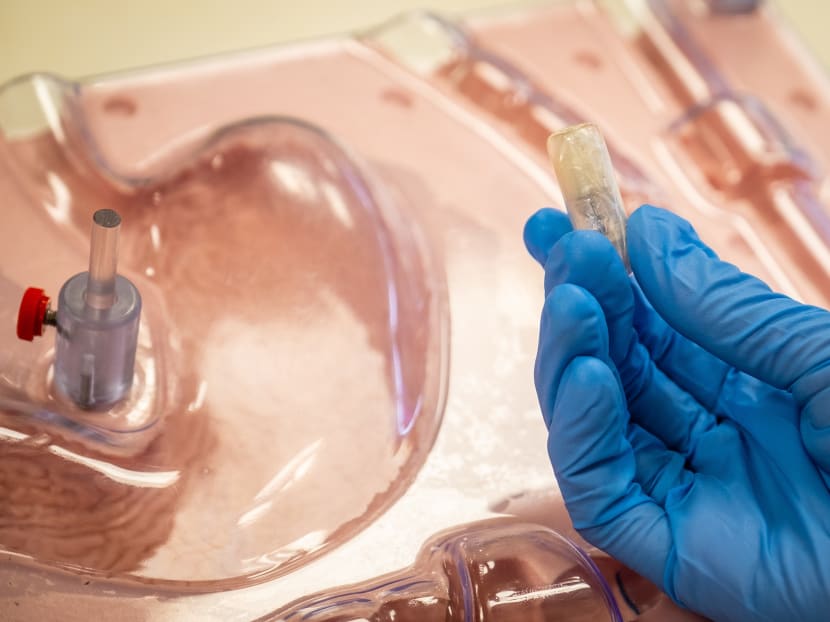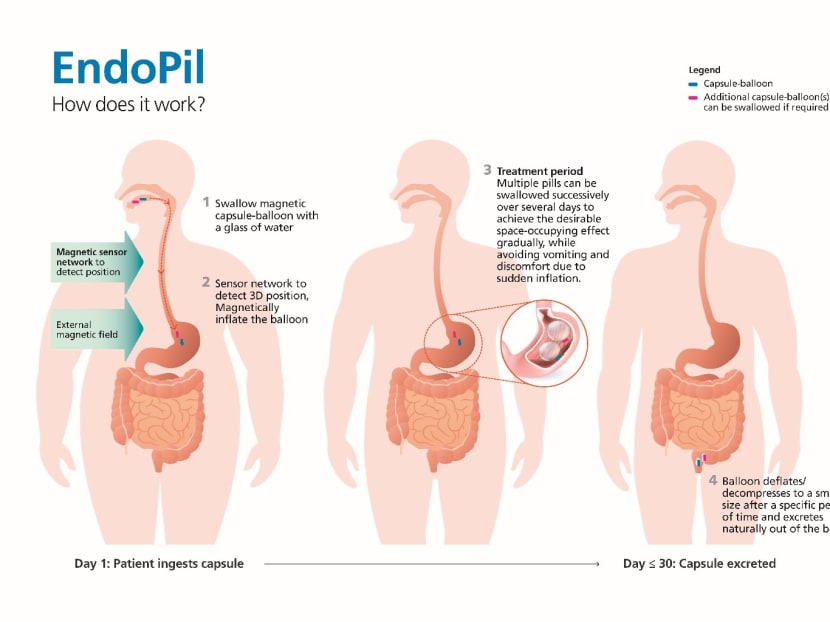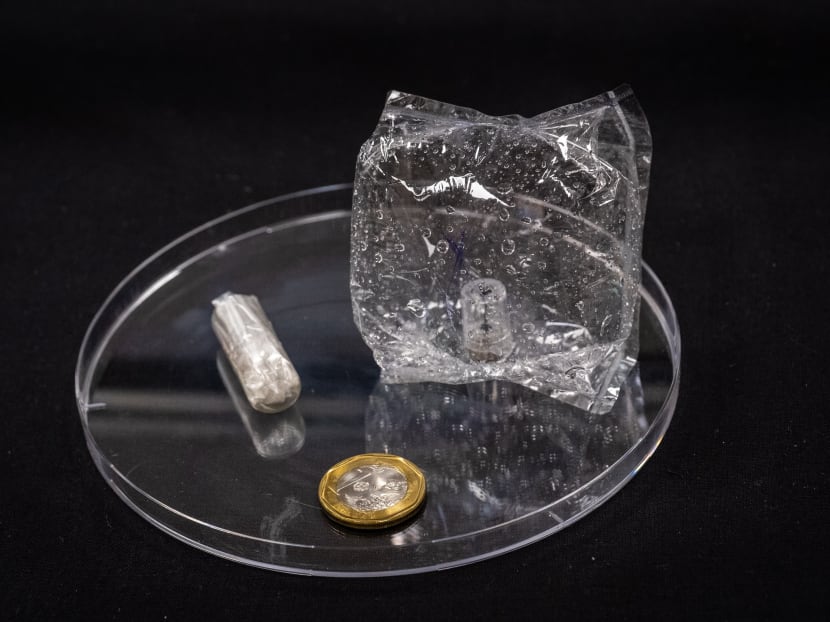NTU, NUHS develop 'pill' that inflates in stomach to help treat obesity
SINGAPORE — Scientists from the Nanyang Technological University (NTU) and the National University Health System (NUHS) have developed a self-inflating weight loss capsule that could be used to treat obese patients.

Researchers are working on a prototype of a weight-loss capsule (pictured). When swallowed, a balloon within can be inflated with a handheld magnet.
SINGAPORE — Scientists from the Nanyang Technological University (NTU) and the National University Health System (NUHS) have developed a self-inflating weight loss capsule that could be used to treat obese patients.
Called the EndoPil, the prototype capsule is designed to be taken with water. Once swallowed and in the stomach, a balloon contained in the capsule can be self-inflated with a handheld magnet, thus inducing a “sense of fullness”.
While the concept is for it to be ingested orally, trials using this route for administration have not yet begun.
In a press release on Wednesday (April 24), NTU and NUHS said that such an orally administered capsule could represent a non-invasive alternative to tackle the global obesity epidemic.
The team that designed EndoPil was led by NTU’s dean of engineering Louis Phee and clinician-innovator Lawrence Ho from NUHS.
Measuring around 3cm by 1cm, EndoPil has an outer gelatin casing that contains a deflated balloon, an inflation valve with a magnet attached, and a harmless acid and a salt in separate compartments in an inner capsule.
The kitchen-safe ingredients were chosen as a precaution to ensure that the capsule remains harmless upon leakage, Professor Phee said.
HOW IT WORKS
Once the capsule enters the stomach, stomach acid breaks open the outer gelatin casing
Its location in the stomach is ascertained by a magnetic sensor
An external magnet is used to attract the magnet attached to the inflation valve, which then opens the valve
This mechanism avoids premature inflation of the device while in the oesophagus, or delayed inflation after it enters the small intestine
The opening of the valve allows the acid and the salt to mix and react, producing carbon dioxide to fill up the balloon
As the balloon expands, it floats to the top of the stomach, the portion that is more sensitive to fullness
Within three minutes, the balloon can be inflated to 120ml
The balloon can then be deflated magnetically to a size small enough to enter the small intestines

A SIMPLER ALTERNATIVE
EndoPil’s main advantage lies in its “simplicity of administration”, Prof Phee said.
“All you would need is a glass of water to help it go down and a magnet to activate it.”
This method aims to overcome the limitations in existing weight management treatments.
At the moment, moderately obese patients and those who are too ill to undergo surgery may choose to use the intragastric balloon — a weight loss intervention that has to be inserted to the stomach via endoscopy under sedation.
It has to be removed six months later using the same procedure, but NTU and NUHS said that “not all patients are open to this option” because of the discomfort they feel undergoing endoscopy.
It is also common for patients using the intragastric balloon to experience nausea and vomiting. Guidelines put up by the Ministry of Health and Health Promotion Board stated that up to 20 per cent require early balloon removal due to intolerance.
The stomach may also get used to the prolonged placement of the balloon within, causing the balloon to be less effective for weight loss.
In comparison, each EndoPil capsule is meant to be removed within a month, allowing for shorter treatment cycles that ensure the stomach does not grow used to the balloon’s presence.
And as the space-occupying effect in the stomach is achieved gradually, side effects such as vomiting and discomfort due to sudden inflation can be avoided.
With EndoPil’s “compact size and simple activation”, Professor Ho said that it could “pave the way for an alternative that could be administered by doctors even within the outpatient and primary care setting”.
“This could translate to no hospital stay, and cost saving to the patients and health system,” he added.

The team is also working on reducing the size of the capsule and programming it to biodegrade and deflate after a stipulated timeframe, before being expelled by the body’s digestive system.
This includes incorporating a deflation plug at the end of the inner capsule that can be dissolved by stomach acid, allowing carbon dioxide to leak out.
TRIAL PROCESS
EndoPil’s viability was first tested in a pre-clinical study, in which a larger prototype was inserted into a pig.
Findings showed that the pig with the inflated capsule in its stomach lost 1.5kg a week later, while a control group of five pigs gained weight.
Last year, the team tested the capsule on a healthy patient volunteer, with the capsule inserted into her stomach through an endoscope. The balloon was successfully inflated within her stomach, with no discomfort or injury from the inflation.
In 2016, an American patent was granted for the balloon-inflating mechanism, while a new one has been filed for the updated innovation.
After improving the prototype, the team hopes to conduct another round of trials involving humans in a year’s time. They will first ensure that the prototype can be naturally decompressed and expelled by the body, before testing the capsule for its treatment efficacy.
Prof Phee and Prof Ho will also spin off the technology into a start-up company called EndoPil.






